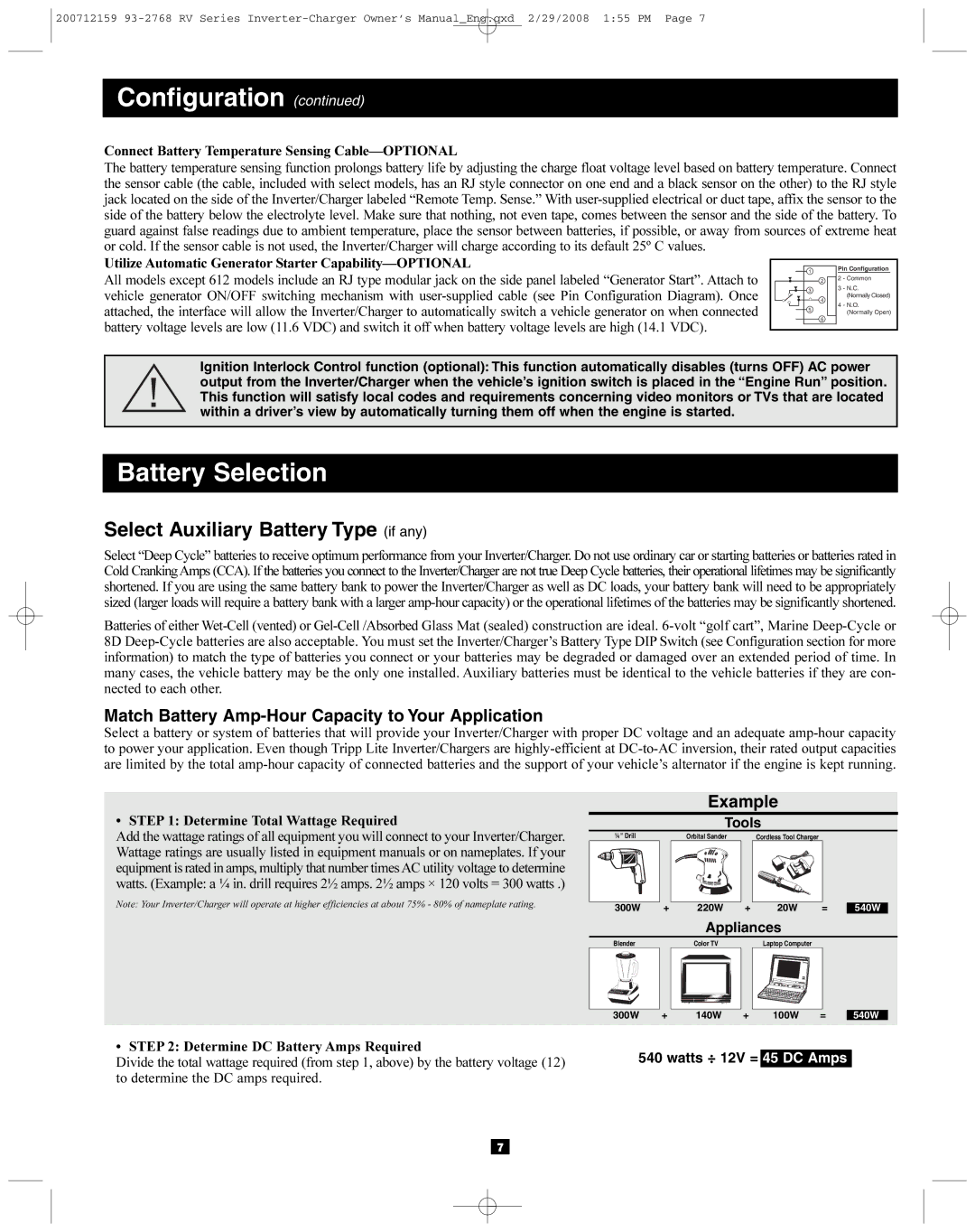200712159 93-2768 RV specifications
The Tripp Lite 200712159 93-2768 RV is a versatile and reliable power solution, designed for both recreational vehicles and various portable applications. Known for its robust performance and sturdy construction, this device offers a multitude of features that make it an essential component for adventurers and outdoor enthusiasts.One of the standout features of the Tripp Lite 200712159 is its exceptional output capacity. With the ability to handle significant load requirements, it ensures that all your essential devices can be powered simultaneously without compromising performance. This capability is particularly beneficial for RV users who rely on multiple devices, such as refrigerators, laptops, and entertainment systems, while on the road.
The device also boasts advanced surge protection technology, safeguarding connected equipment from transient voltage spikes, which can occur due to lightning strikes or power surges. This feature provides peace of mind, particularly when traveling through areas with unstable power sources. In addition, the unit is designed with rugged durability in mind, featuring a weather-resistant casing that protects it from the elements. This characteristic makes it perfect for outdoor use, where exposure to moisture and changing temperatures can be a concern.
The Tripp Lite 200712159 is also incredibly user-friendly. It includes an intuitive interface with LED indicators, allowing users to easily monitor power status and load capacity. This interface helps ensure users can operate the device efficiently, reducing the risk of overload situations. Furthermore, the compact design of the unit makes it easy to transport and store, which is a vital consideration for RV travelers who often have limited space.
A notable characteristic of this power solution is its compatibility with a wide range of devices. From laptops and smartphones to larger appliances, the Tripp Lite 200712159 can accommodate various power needs, making it an ideal choice for camping trips, tailgating events, and more.
In conclusion, the Tripp Lite 200712159 93-2768 RV stands out as a highly functional power supply that combines robustness, safety features, and user-centric design. Its impressive versatility and ability to handle substantial demands make it a must-have for anyone looking to enhance their outdoor experiences or streamline their RV adventures. With this power solution at your disposal, you can confidently enjoy all your electronic devices, no matter where the road takes you.

